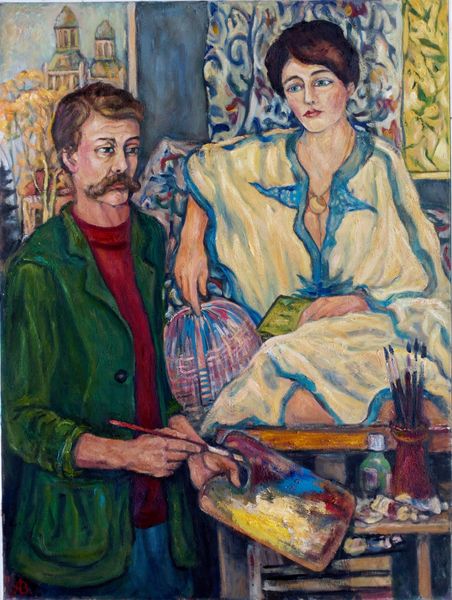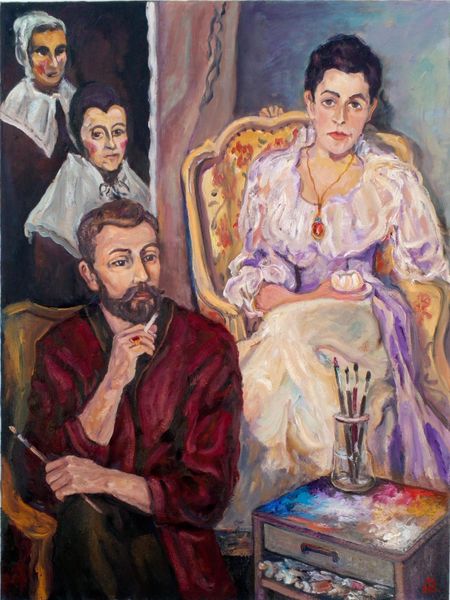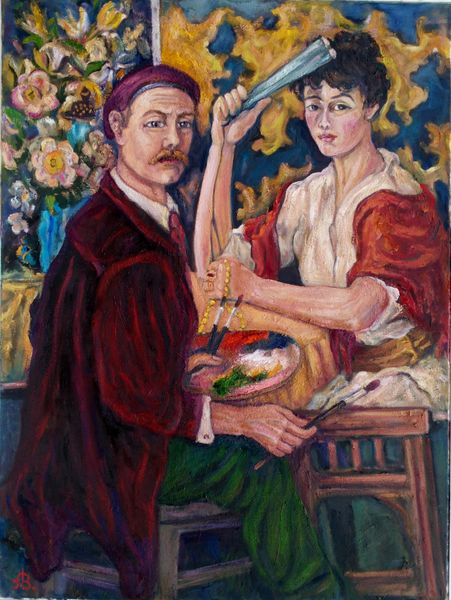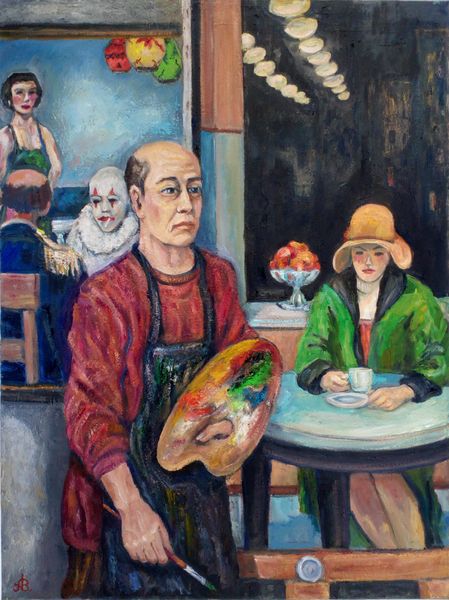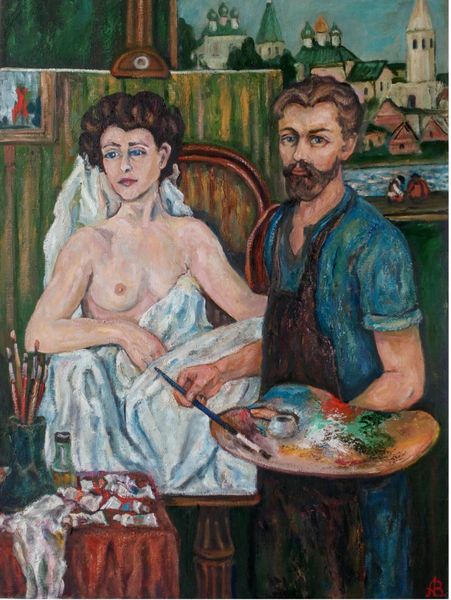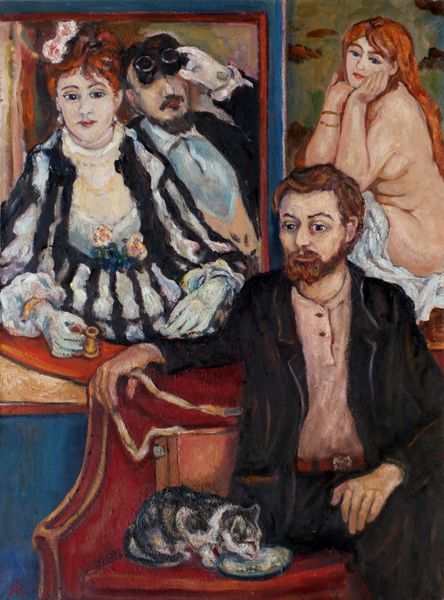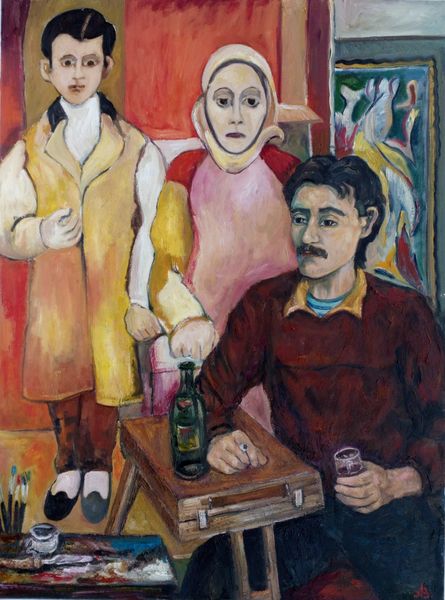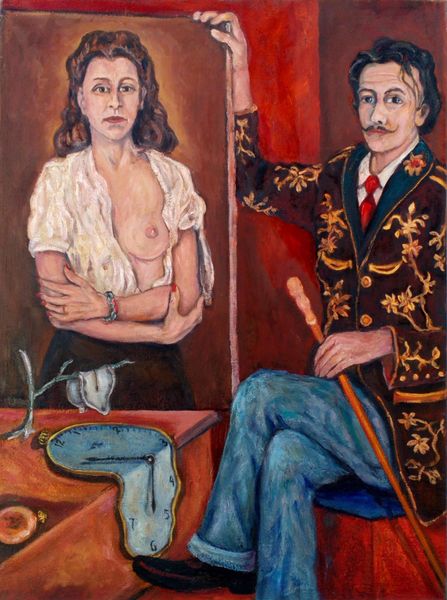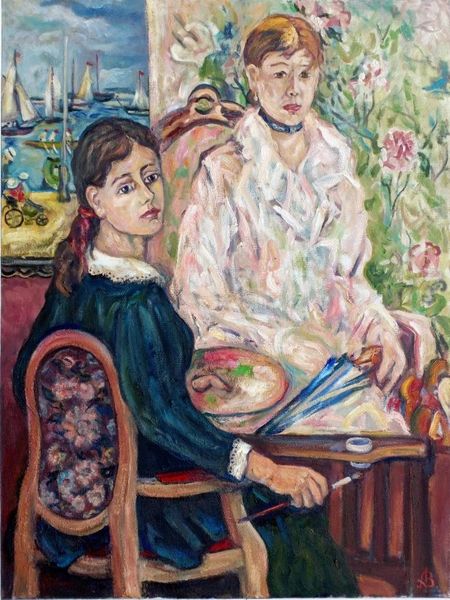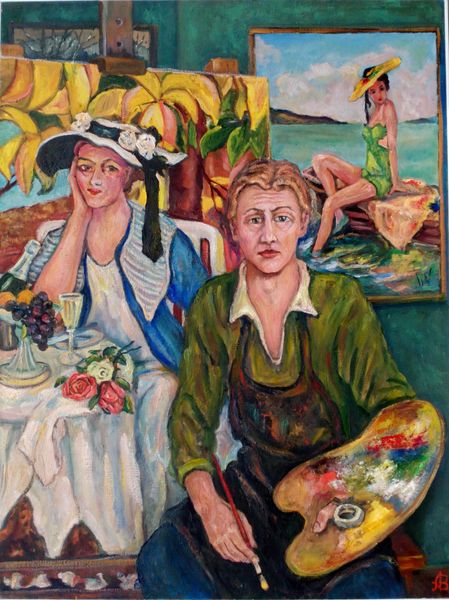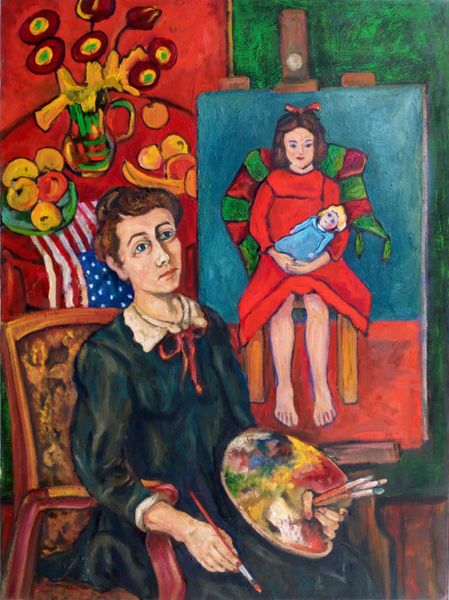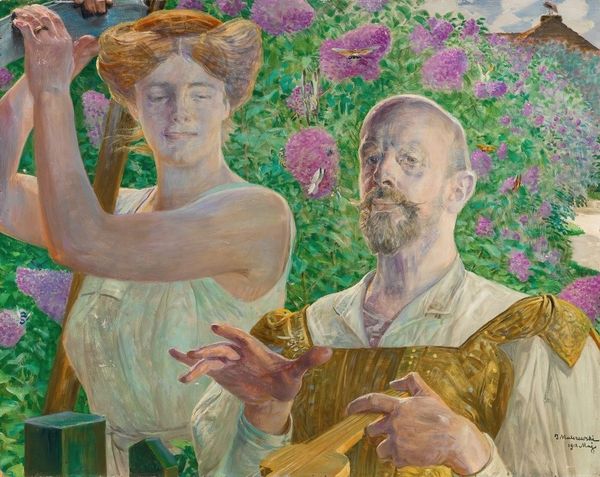
Dimensions: 76.2 x 101.6 cm
Copyright: allakhverdov.com
Editor: Here we have Andrey Allakhverdov's 2015 painting, "Gustav Klimt," rendered in oil. I’m struck by the distinct separation between the two figures; she's ornamented and seemingly detached, while he is captured with a greater sense of immediacy and presence. How do you interpret this separation within the work? Curator: That’s an insightful observation. I immediately consider the historical and social positioning of women in art. This work speaks volumes about the artist's gaze. While it references Klimt's style and subject matter, we have to consider how a contemporary artist engages with a loaded history. Note how the female figure seems confined, adorned as a decorative object, a recurring theme in Art Nouveau and particularly in Klimt's oeuvre. The separation isn’t just physical; it's a separation of power and representation. Editor: That makes sense. So, the artist might be using Klimt's aesthetic to critique the objectification of women inherent in that artistic movement? Curator: Precisely. Think about how Allakhverdov uses a known visual language – Art Nouveau, Klimt – to engage with current conversations around gender, representation, and power. How does placing "Klimt" himself in the portrait alter this power dynamic? Editor: By placing him within the same frame, Allakhverdov seems to implicate the artist in the historical and continuing dynamic, not just in the objectification of the female model. He's not just portraying; he's also reflecting on his role and the gaze. Curator: Exactly. And consider how painting, particularly portraits, is complicit in constructing social identities. Art becomes a site where these power relations can be interrogated. Editor: This conversation makes me look at it in a whole new way. Thank you. I am not so sure if I like it anymore. Curator: Indeed! And the dialogue – our questioning and probing of established narratives – is precisely where art gains its resonance and offers itself as an opportunity for transformative critique.
Comments
No comments
Be the first to comment and join the conversation on the ultimate creative platform.
